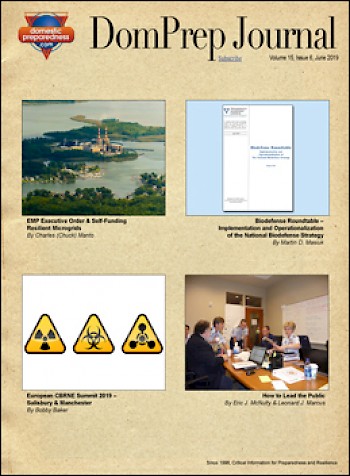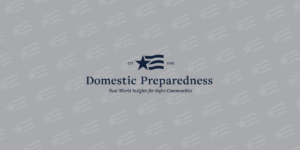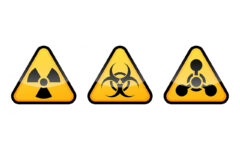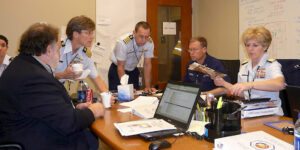

EMP Executive Order & Self-Funding Resilient Microgrids
Charles (Chuck) L. Manto
June 26, 2019
The U.S. government published two landmark emergency management policies in March 2019. The first was the update of the 2015/2016 Space Weather Strategy and Action Plan released from the Office of the President. DomPrep published an article on 15 June 2016 describing how the strategy and action plan affected disaster and emergency operations planning. Then, on 26 March 2019, the Federal Register published the Executive Order of the President 13865 (EO 13865), entitled “Coordinating National Resilience to Electromagnetic Pulses,” which outlines the threats to the national (and global), economic, as well as health and safety security.

The Enterprise That Guards Against Attack
Catherine L. Feinman
June 26, 2019
The Homeland Security Act of 2002 created the Department of Homeland Security (DHS) to safeguard
the United States against terrorism. The department brought together 22 different federal agencies, each
with a role to: prevent terrorism and enhance security, especially from a chemical, biological,
radiological, nuclear, or high-yield explosive (CBRNE) attack; manage borders; administer immigration
laws; secure cyberspace; and ensure disaster resilience. That is just the federal part of the equation.
The first DHS Secretary, Governor Thomas Ridge, envisioned an enterprise where state, local, tribal, and
territorial governments were also an integral part of that mission. What is not clearly stated is the
role that nongovernmental organizations play. This would include industry, think tanks, and media.

European CBRNE Summit 2019 – Salisbury & Manchester
Bobby Baker Jr.
June 12, 2019
Birmingham, United Kingdom – Over the past few years, the term “asymmetry” has been applied many times to the emerging threat landscape to first responders and military personnel around the world. Asymmetrical means that two sides do not match or are uneven. Intelligence SEC’s 2019 European CBRNE Summit recently held in Birmingham, United Kingdom, highlighted two of the largest and most prominent chemical, biological, radiological, nuclear, high-yield explosive (CBRNE) incidents in the world: The 2018 Salisbury nerve agent attack and the 2017 Manchester concert arena bombing. Intelligence-SEC will be presenting the 2019 Asian CBRNE Summit to be held 3-5 December 2019 in Bangkok, Thailand.

How to Lead the Public
Leonard J. Marcus and Eric J. McNulty
June 5, 2019
In almost any adverse incident, whether natural or manmade, the general public is involved. At
times, they are the victims and survivors. Active bystanders may be the true first responders simply
because of proximity. Volunteers often surge forward hoping to help. Eager though untrained, members of
the public can be a help or hindrance – and the difference may be how effectively they are led.

